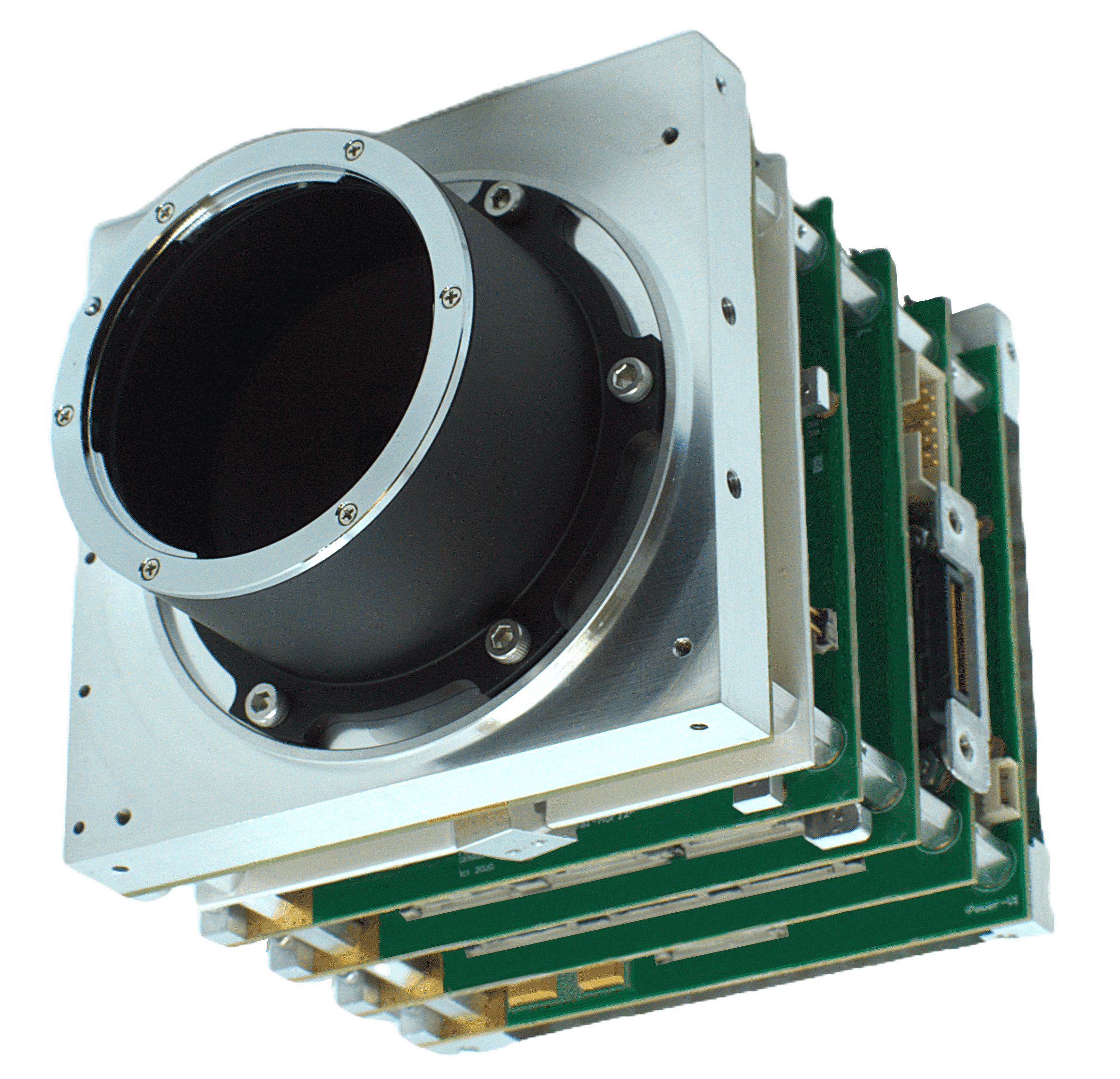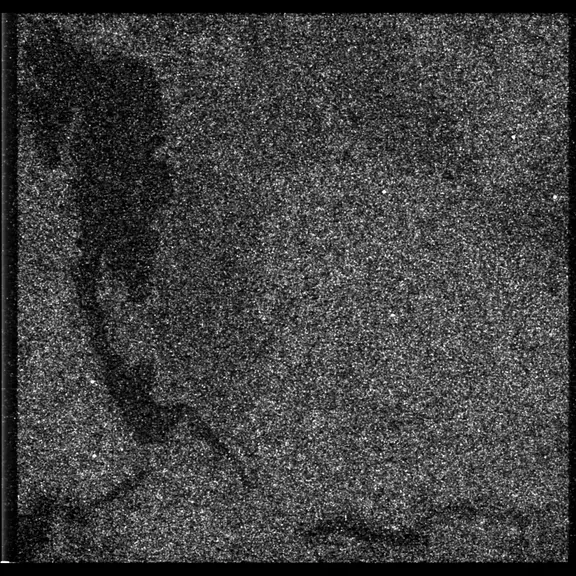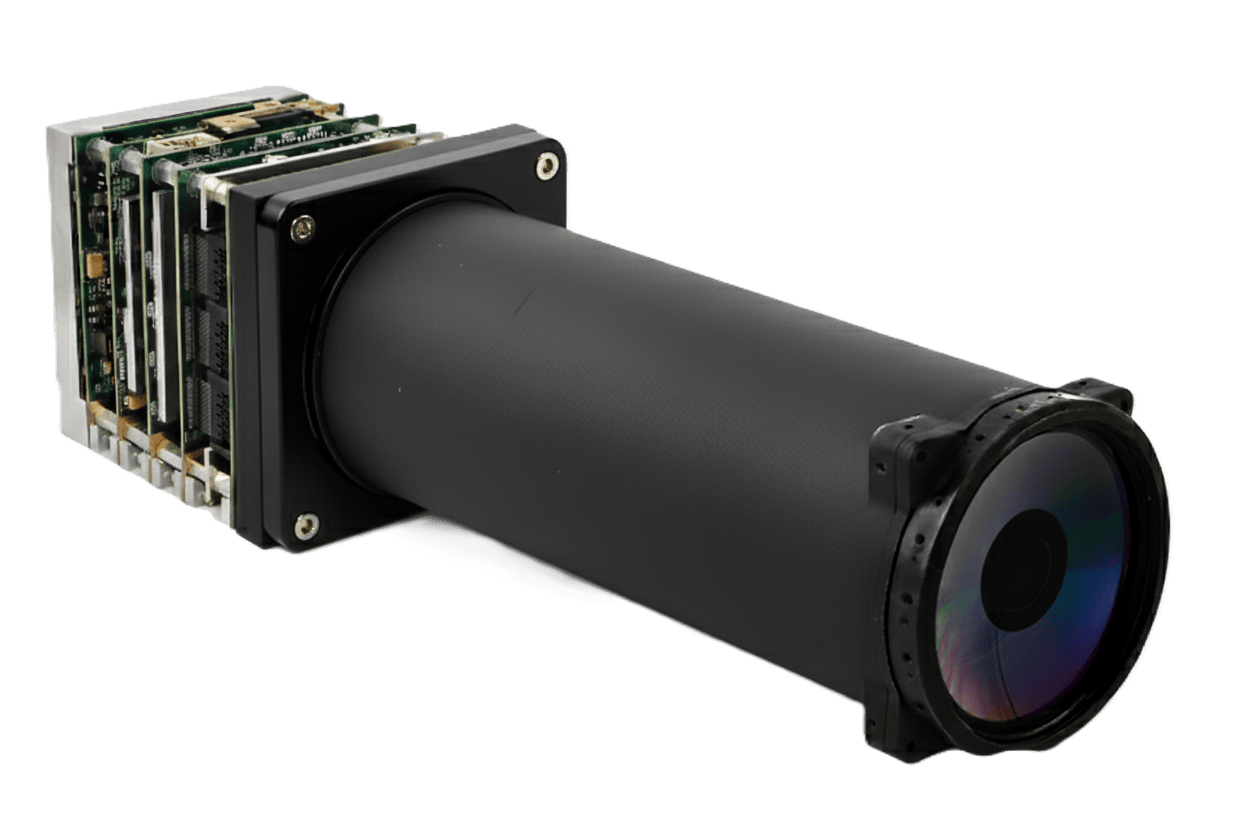Products
Your all-inclusive solution
All Products
Download our catalog
Get our Catalog
Applications
The nüSpace platform is a state-of-the-art imaging solution built to bring Nüvü’s signature electronics to nanosatellites, based on our design developed for NASA's flagship Roman Grace space telescope. With unmatched sensitivity and flexibility with customizable detectors (EMCCD, CCD, CMOS), and to integrate optics & interfaces, nüSpace camera platform enables novel mission goals.

The nüSpace camera platform excels in both long exposure times for ultra-sensitive data collection and rapid capture rates. Made to fit in 1U, tailored for seamless integration into nanosatellites, rad hard design accounting for SEE (upsets, latch-ups) and customizable from LEO to GEO & beyond, as well as detectors to meet various GSD & swath width requirements (with or without optics provided).
This versatility coupled with minimal noise levels, rapid processing capabilities, specialized readout modes and extensive customization options means Nüvü Camēras’ nüSpace offers a direct path to flight in practically any project - from tracking space debris and monitoring Earth’s surface to capturing images of exoplanets in the quest for extraterrestrial life signs.
When used as a readout electronics solution, nüSpace also allows to save significant costs & time in supporting custom sensors, saving the need for in-house developments to achieve maximum performances for your next mission.
Thanks to top-of-the-line EMCCD and CMOS sensors support, the nüSpace platform is capable of single photon detection. This means you can image targets in night-time conditions while using very short exposures and working with high f-number optics which minimize your GSD.


While the nüSpace camera is already available with multiple EMCCD (single & multi-output), CMOS & CCD detectors, most notably:
The nüSpace platform is highly flexible and Nüvü Camēras has a unique expertise in supporting new detector technologies. Nüvü Camēras has been bringing innovative imaging technologies to space with space agencies since its founding in 2010, and with the space industry since 2015.

The nüSpace platform has on-board processing capabilities to apply corrections & work acquired images to extract only relevant data from acquisitions.
For scanning applications, nüSpace features time-delay integration (TDI) imaging mode. TDI drastically increases exposure time compared to snapshot imaging, allowing much higher quality images of moving objects.

Any questions about EMCCD or low light imaging? Nüvü Camēras experts can provide advices on your low light imaging options.